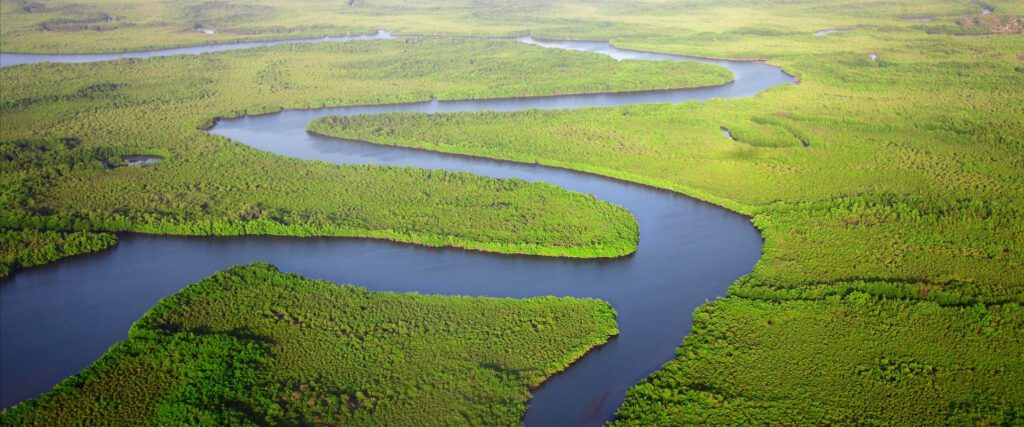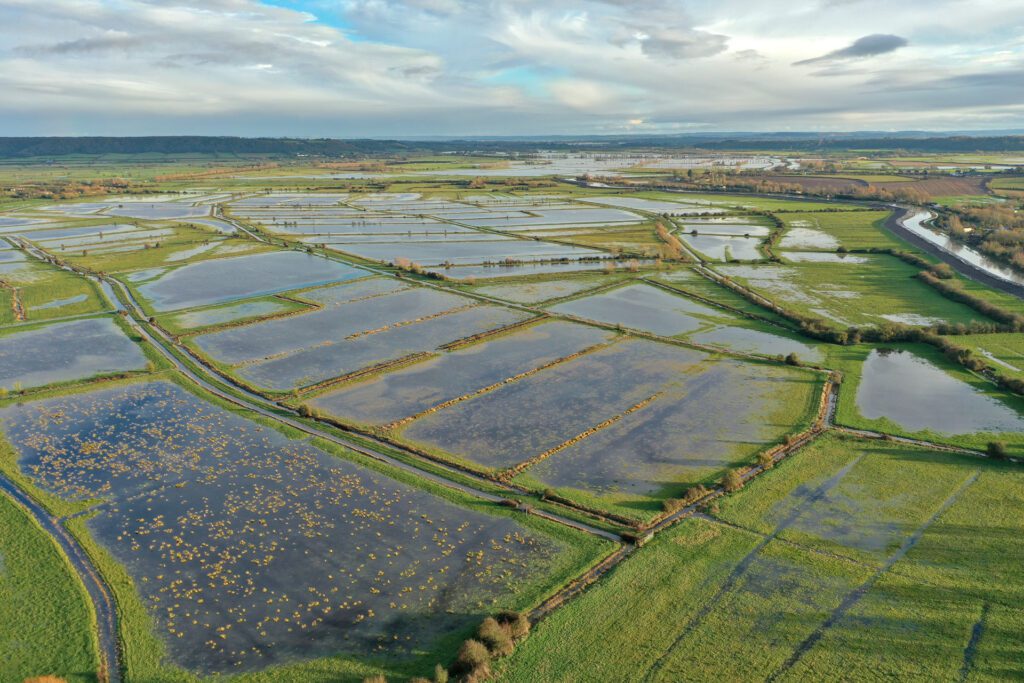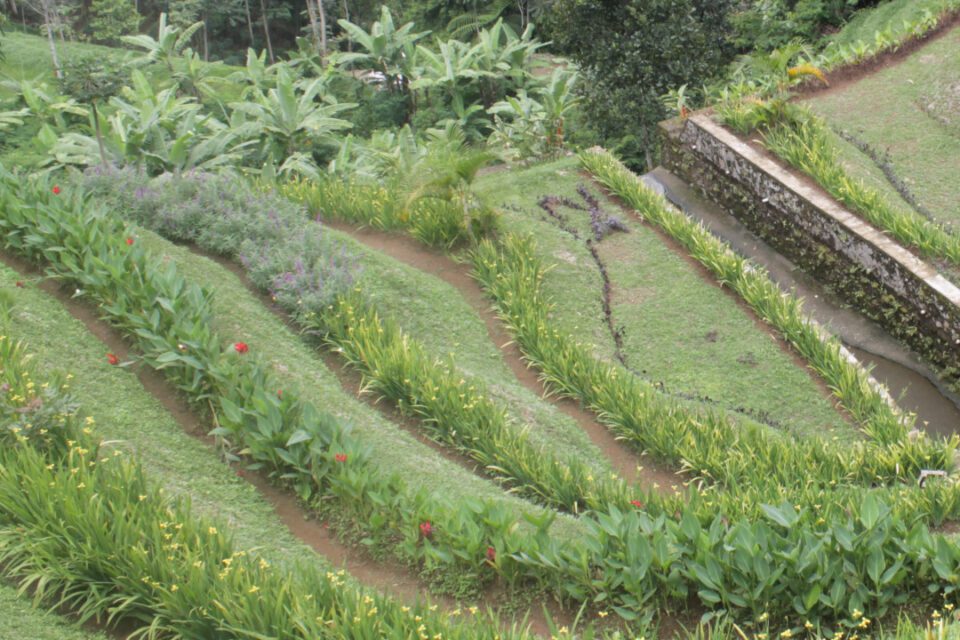With water integrated in so many aspects of the economy and environment, it is understandable that sustainable management of water resources often follows an IWRM approach.
Integrated Water Resources Management (IWRM) “promotes the coordinated development and management of water and related resources for equitable social and economic development without compromising the sustainability of vital ecosystems” (Global Water Partnership, 2000).
Most of us have been using the IWRM guiding principles (see table below). They are OK. In practice, however, they are somewhat undefined and not very helpful when trying to figure out how to make better use of the water resources in a catchment.
Then there is a scale issue. When do you start applying these principles? Vice versa, at what spatial scale do you stop using them?
| Guiding Principles at the basis of Integrated Water Resources Management (Dublin 1992) Principle 1: Freshwater is a finite and vulnerable resource, essential to sustain life, development, and the environment Principle 2: Water development and management should be based on a participatory approach, involving users, planners, and policy-makers at all levels Principle 3: Woman play a central part in the provision, management, and safeguarding of water Principle 4: Water has an economic value in all its competing uses and should be recognized as an economic good |
There are other complicating factors. Two themes, in particular, have become more pronounced in IWRM in the last decade: 1) weather extremes are becoming the norm, and 2) we almost never have adequate resources—in terms of data, budgets, people, models, law enforcement, etc.—for water resources management. This will probably not change, unfortunately, since water management is just not the top priority in many places. For understandable reasons, focus is on education, infrastructure, health care, rural electrification, pensions, sanitation and safe drinking water, and others. IWRM comes later.
With the above in mind, I sat down and tried to come up with a set of complementary water resources principles. Perhaps better to refer to them as ‘guidelines’. By and large they should meet the following criteria:
- Generic, practical, and applicable at all scales and in most climates
- Lead to solutions that can be implemented incrementally (in a series of small successive projects)
- Are inclusive and useful for actors at all scales, thus including local actors
- Recognize that water resources systems are complex
- Lead to robust solutions that work in a changing climate
- Manage water resources with minimal managerial input or external funding
Guidelines for Water Resources Management
- Slowdown the flow of water
- Make maximum use of rainfall
- Focus on increasing water productivity in the agricultural sector
- Use groundwater—in the agricultural sector—in the first place to improve the productivity of rainfall (and surface water resources)
- Prioritize the environment over agriculture
- Create redundancies (thus, do not optimize)
- Emphasize small-scale decentralized solutions
- Create beneficial assemblies
- Encourage nature-based solutions
- Make the polluter pay
- Do not forget solutions for water problems that are outside the water sector
- Reduce the role of the cost-benefit analysis
This blog post will discuss the first 6 items on this list. The others will be covered in a follow-up post.
Slowdown the flow of water
This approach is the polar opposite of draining a catchment as fast as possible—which was the prevailing strategy around the 1970s.
This guideline centers around slowing down the movement of water downstream, and storing it in the landscape or in a distributed set of retention infrastructure of all sizes—at plot, farm, landscape, and catchment scale. It will attenuate the hydrological regime and provide a level of protection from very wet and very dry periods. Most effective is to start at the top of the watershed and create a distributed ‘chain of pond’ system through a combination of soil moisture and groundwater storage, wetlands, water banking in the floodplain, and surface water retention infrastructure, from very small to larger. Nature-based solutions play a principal role in this setup. Water quality is improved along the way through biological processes.
Make maximum use of rainfall
Rainwater represents a huge volume of water and is free. Most of it (>80%) never reaches the river or groundwater system. It is a distributed water resource that is not available for usage outside its immediate vicinity, and it therefore predominantly used for biomass production or just evaporates. Evaporation is rainfall that returns to the hydrological cycle without productive use, and therefore constitutes a waste. Productive use of rainfall is mostly concerned with rainfed agriculture, grasslands that support pastoralism, or maintaining diverse ecosystems. The productivity of rainfall is typically low—except for the temperate climate zone.
The low productivity of rainfed agriculture is caused by the high temporal variability of rainfall in most of the world, which makes it unreliable. Periodic moisture deficits in the growing season are typically small but can nevertheless cause crop failure. Under these conditions, farmers are unwilling to invest in agricultural inputs and improved cultivars that are at the basis of agricultural modernization. However, many different strategies exist to achieve water security in rainfed agriculture. They typically involve relatively small volumes of water. Some are concerned with supplementary irrigation from groundwater or local surface water sources. Others focus on increasing soil moisture storage or establishing cover crops that reduce evaporation and lower soil temperatures. Still others aim to create micro-climates or are based on agro-forestry. Often a combination of measures is used. All these strategies are small-scale and can be implemented by local actors. Rainwater productivity improves proportionally with improving crop yields.
Improving rainwater productivity in extensive grassland areas is concerned with maintaining groundcover. Without it, rainfall will just evaporate without productive use. By contrast, a permanent vegetation cover will cause most rainfall to transpire and produce biomass. In addition, it will also increase groundwater recharge.
The potential for improving rainwater productivity is large. However, it is noted that investments to improve rainwater efficiency in the agricultural sector (the single biggest user) are generally only warranted when agriculture is a viable economic proposition.
Focus on increasing water productivity in the agricultural sector
Since agriculture is the single biggest water user, the starting point for sensible water resources management is looking for water productivity gains in the agricultural sector. Similarly, if water resources are (or have become) scarce, start with looking for water savings in the agricultural sector. Efficiency gains or water savings made in other sectors will probably have a much smaller impact.
Potential measures are wide-ranging and diverse and will depend on the specifics of each farming system, location, and climate zone. They range from removing subsidies on irrigation water, encouraging crops that use water more efficiently, taking acreage out of production, reducing over-irrigation by increasing the reliability of water delivery, or importing virtual water through agricultural trade. There are many others.
Misallocation or low water productivity in irrigated agriculture often arise from legacy issues that are very hard to address. For example, water scarcity in the western part of the USA is often caused by the riparian water rights system that has proved difficult to reform and lead to crops in an arid or semi-arid region that should probably be grown somewhere else (such as rice in California). It is well understood that ‘politics is the art of the possible’, and a balance must be found between what is possible and what is desirable. Nevertheless, perhaps best to ‘aim high’.
Use groundwater—in the agricultural sector—in the first place to improve the productivity of rainfall (and surface water resources)
Groundwater resources worldwide are vast and exceed surface water resources by a large percentage. Nevertheless, they are finite. In many places, long-term groundwater extraction outpaces recharge and groundwater tables are declining. It goes without saying that groundwater over-exploitation is not sustainable and should be avoided.
Renewable groundwater is ideally suited to increase the productivity of (unreliable) rainwater or irrigation water sourced from rivers (which often is also unreliable because of siltation in the canal system or variations in river flow). Thus, rather than being the primary water source, groundwater in this case provides supplementary water supply on an ‘as and when needed’ basis. Its primary aim is to achieve water security. Note that water security is at the basis of agricultural modernization and improving the productivity of water in rainfed agriculture or the irrigation sector. Finding the right (multi-year) recharge-abstraction balance will differ for every region and every irrigation scheme.
Although groundwater mining is always discouraged, a distinction is made between ‘cheap groundwater’ and ‘expensive groundwater’. The latter concerns groundwater used for industrial purposes or for domestic water supply in urban areas. Here, alternative water sources—such as seawater desalination, intra-basin transfer, or rainwater harvesting—are theoretically available and probably viable. Hence socio-economic systems that are based on mining ‘expensive’ groundwater do not necessarily collapse if groundwater sources eventually dry up. By contrast, this is not the case for ‘cheap groundwater’. This is groundwater used for agricultural purposes to produce affordable staple food (for instance from the Ogallala aquifer in the USA). Once this water source runs dry, broadacre agriculture to produce cheap food stops being a viable economic activity. It will cause a painful social-economic adjustment with attended social consequences over a large area, although probably played out over many years.
Always prioritize the environment over agriculture
Biodiversity is in rapid decline across the globe. According to Johan Rockstrom in the documentary ‘Breaking Boundaries’, the planetary boundary for biosphere integrity was crossed many years ago. The Earth progressively loses its resilience with each planetary boundary that is crossed—which is currently the case for 4 out of 9.
Riparian ecosystems are rich in biodiversity and many countries have mandated environmental flow requirements and the protection of wetlands. Nevertheless, environmental flows—in practice—often lose out in extreme drought years, when irrigated agriculture is given priority.
Given the worldwide decline in biodiversity, I would advocate to reverse this policy. Rather than favoring irrigated agriculture (in practice), always prioritize the environment and be firm in maintaining environmental flows or preserving wetland systems.
The thinking behind this guideline—apart from the importance of biodiversity—is that there is almost always a way to make up for the ‘lost’ agricultural produce. Either through trade, storage, reducing food losses and waste, or increasing water productivity and crop yields. By contrast, recovering the loss of riparian environmental value after a drought-induced collapse can take many years.
Besides, environmental systems provide services that are difficult to quantify but are essential, such as pollination or regulation of soil erosion.

Create redundancies (thus, do not optimize)
The impacts of climate change are uncertain and non-linear. However, what we do know is that extreme events will probably become the new normal: more and higher floods; more severe droughts. The former requires more water storage capacity (to attenuate the flood wave) and the latter calls for keeping these reservoirs full at the end of the rainy season and not allocating all water resources. It implies a high degree of redundancy: extra water reserves or extra storage capacity that is only occasionally needed.
Redundancies should not be confused with wasteful water use or random water losses in a delivery system or production process. Rather, redundancies are deliberately selected and specifically designed to create spare capacity and some slack in the system to eliminate (or at least ‘very substantially reduce’) the risk of failure of the system that depends on the water resource.
Redundancy coupled with diversity (in terms of location, size, and type, but also in terms of response) is at the basis of resilience since it creates a suite of options to manage a disturbance or extreme condition. Optionality is also essential to adapt to new realities (in terms of climate or socio-economic conditions).
Maintaining redundancies is the opposite of optimization. Making optimal use of a resource—such as water or storage capacity—is not always the right approach in water resources management because it is too risky. This specifically applies when the consequences of failure are large and affect the livelihood and safety of people—often the most vulnerable people in society. Here, a better approach is to forfeit some marginal benefits (achieved through optimization) but avoid total system failure: severe flood damage, large-scale generalized crop loss, or a collapsing riparian ecosystem.
For many water-dependent systems, the key word is “reliable”, not “optimal”
An additional benefit of creating redundancies is that it greatly simplifies water management. After all, spare capacity creates room for errors and can buffer events that were not anticipated.
Redundancies will also help in meeting environmental flow requirements and preserving riparian ecosystems, as water resources that are not allocated but kept in reserve can be made available for the environment once they are no longer needed.
From ‘just in time’ to ‘just in case’
This post discussed six guidelines for water resources management. Another six will follow in the next post.
The guidelines—as a set—should be considered as a roadmap for operationalizing IWRM. Obviously, the application of the guidelines differs per watershed and are a function of local conditions. They were specifically developed for conditions where financial and managerial resources are constrained, where water is scarce, and where water related sectors play a critical role in the local and national economy.
Having said that, the guidelines probably have a broader application range and can also be relevant for countries where water is less critical for the national economy.

REFERENCES:
SIWI, Manual 1, Principles and Practices of Integrated Water Resources Management, 2020
Biggs, R et al, Principles for Building Resilience: Sustaining Ecosystem Services in Socio-Ecological Systems, Cambridge University Press, 2015
